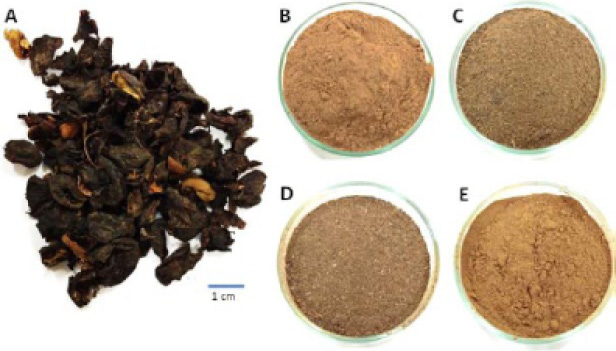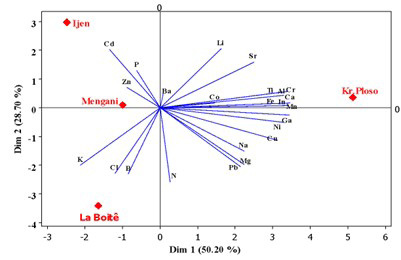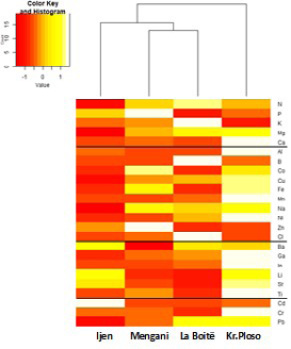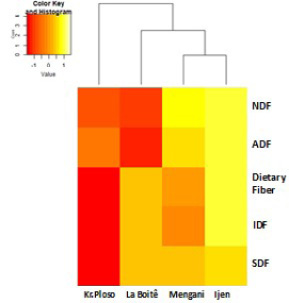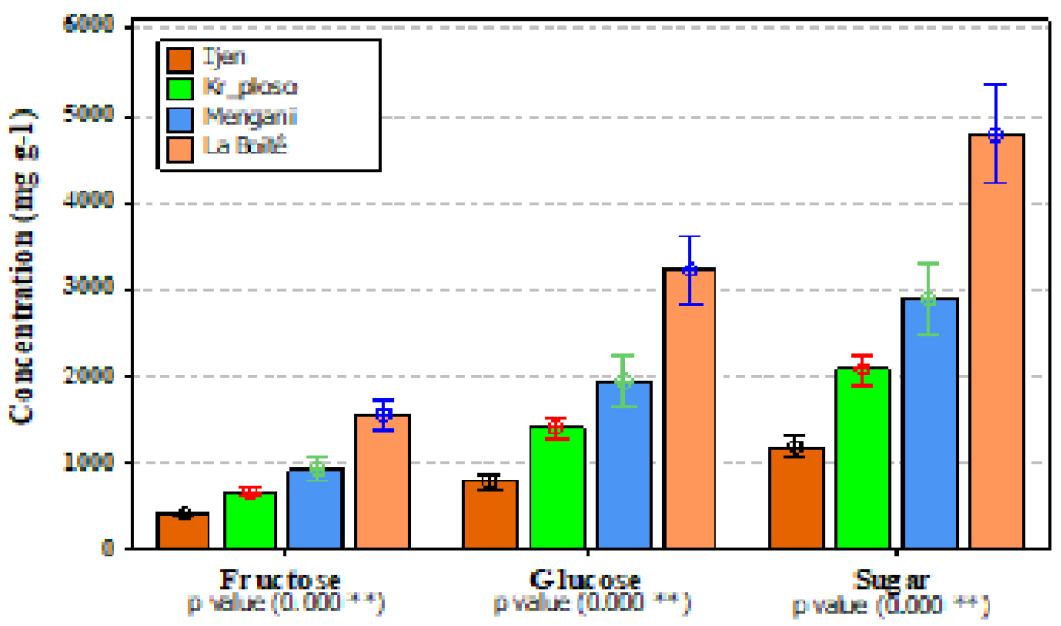Coffee Pulp Characterization and Utilization in Coffee Cherry Flour for Circular Economy Improvement
Coffee Pulp Characterization and Utilization in Coffee Cherry Flour for Circular Economy Improvement
Damat Damat1, Roy Hendroko Setyobudi2, Shazma Anwar3, Mohammed Ali Wedyan4,
Zane Vincevica-Gaile5, Yogo Adhi Nugroho2, Tony Liwang2, Thontowi Djauhari Nur Subchi1*,
Ahmad Fauzi1, Hanif Alamudin Manshur1, Devi Dwi Siskawardani1, Vritta Amroini Wahyudi1,
Yolla Muvika Ananda1 and Hemalia Agustin Rachmawati1
The appearance of unprocessed coffee pulp (A), Four coffee cherry flour products from Mengani (B), Karangploso (C), Ijen (D), and La Boitê commercial product (E).
The PCA result and the heatmap of standardized mineral values from different sources.
Dietary fiber content expressed as a heatmap (Fig. 3a), and sugar contents indicated in the bar graph (Fig. 3b). The value expressed in the heatmap is z standardized.





